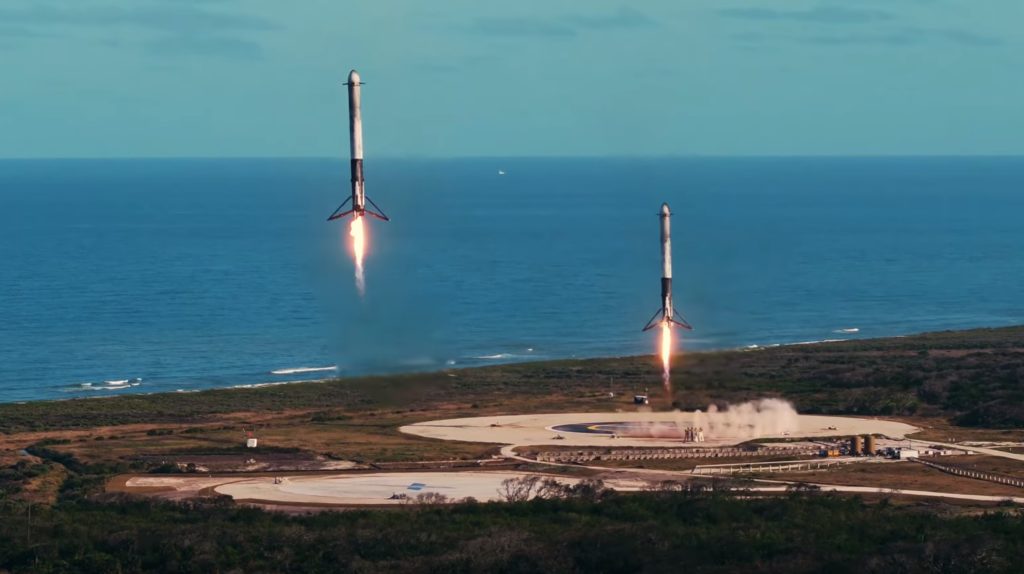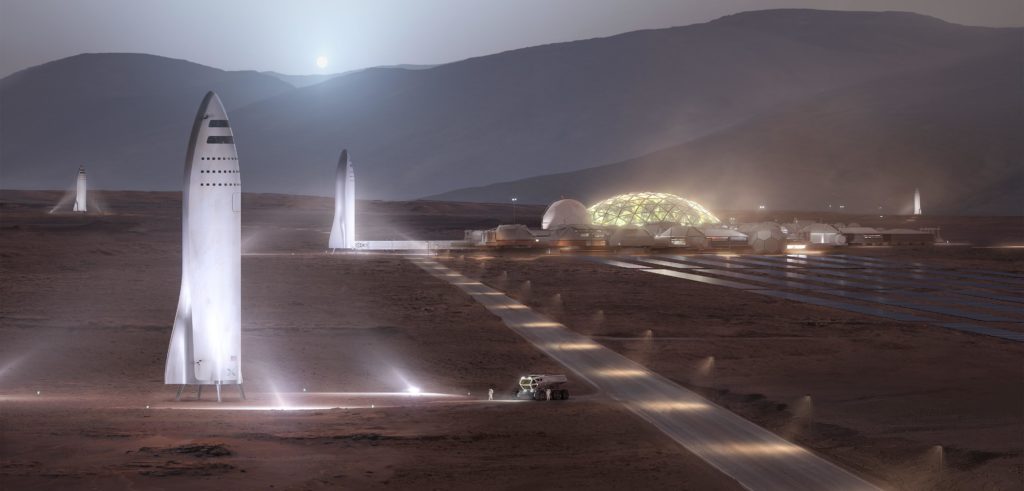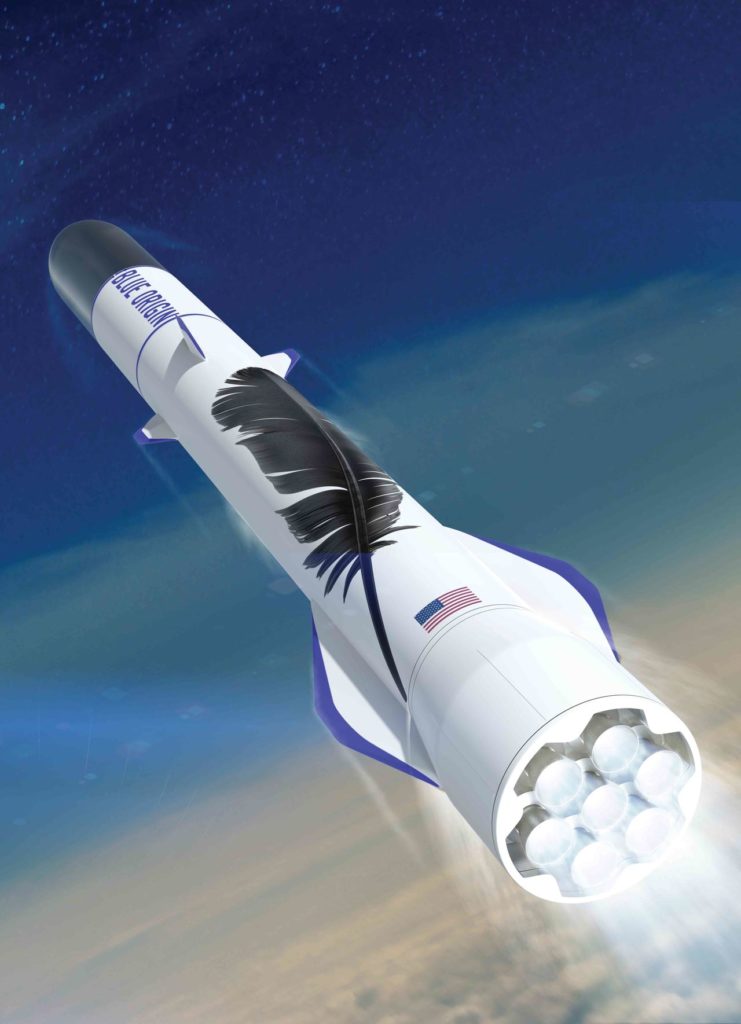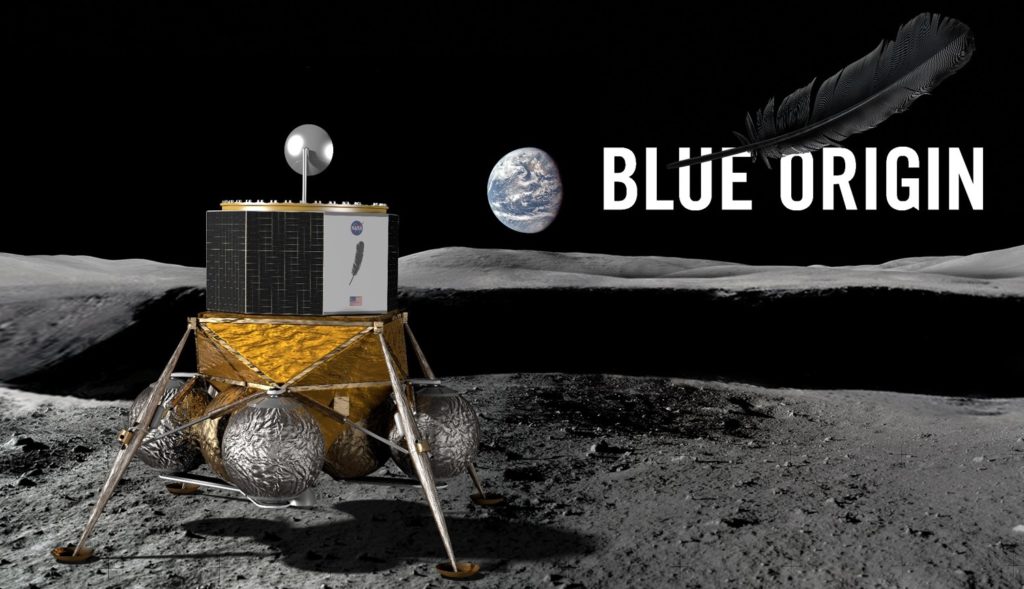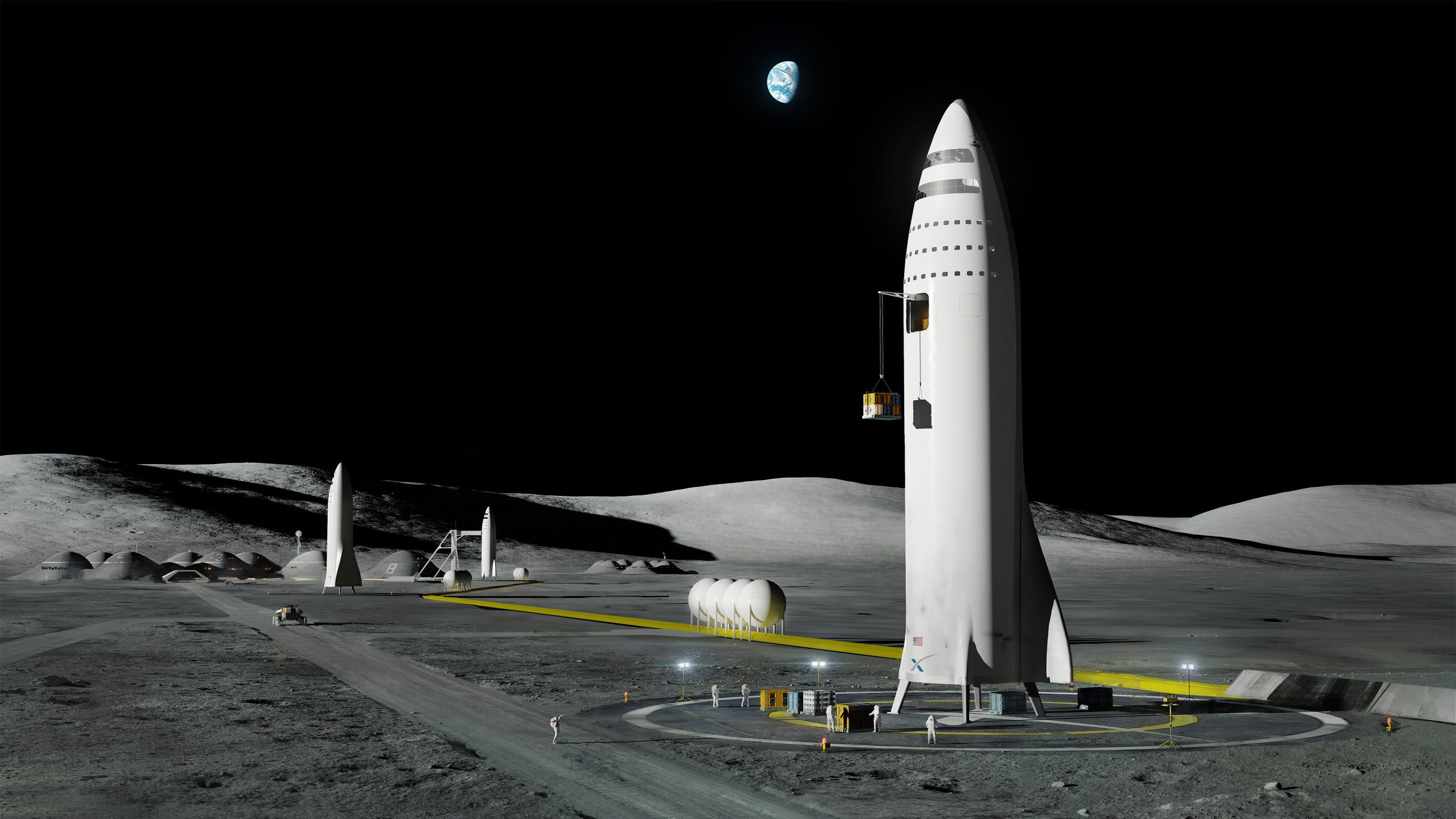
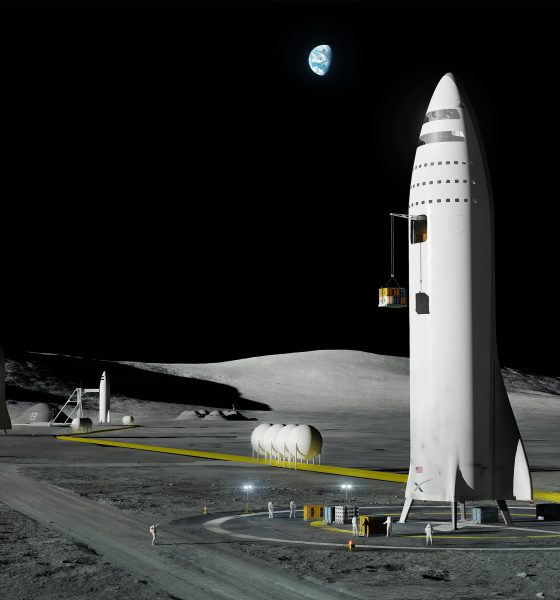
News
NASA head hints that reusable rocket cos. like SpaceX will enable Moon return
In a series of thoroughly unexpected and impassioned introductory remarks at one of several 2018 Advisory Council meetings, NASA administrator Jim Bridenstine bucked at least two decades of norms by all but explicitly stating that reusable rockets built by innovative private companies like SpaceX and Blue Origin will enable the true future of space exploration.
Incredibly, over the course his fascinating hour-long prelude, Bridenstine effectively mentioned NASA’s own SLS rocket and Orion spacecraft – under development for the last decade at a cost of at least several tens of billions of dollars – a total of one time each. Instead, heavily emphasizing the absolute necessity that NASA’s next major human exploration project be sustainable, the administrator spoke at length about the foundational roles that international and domestic space agencies and private companies will need to take on in order to make NASA’s on-paper return to the Moon both real, successful, and useful.
Aside from his arguably brave (but spot-on) decision to all but ignore Boeing and Northrop Grumman’s SLS rocket and Lockheed Martin’s Orion spacecraft over the course of an hour spent speaking about the future of NASA’s human exploration of the Moon and on spaceflight more generally, Bridenstine had nothing but praise for recent successes in the American aerospace industry.
Most notably, he spoke about his belief – at least partially stemming from an executive order requiring it – that the only way NASA can seriously succeed and continue to lead the world in the task of human space exploration is to put an extreme focus on sustainability. Judging from his comments on the matter, the new NASA/Federal buzzword of choice is just a different way to describe hardware reusability, although it certainly leaves wiggle room for more than simply avoiding expendable rocket hardware.
“It’s on me to figure out how to [return to the Moon] sustainably. … And this time, when we go, we’re gonna go to stay. So how do we do go sustainably? Well, [we take] advantage of capabilities that didn’t exist in this country even five or ten years ago. We have commercial companies that can do things that weren’t possible even just a few years ago … to help develop this sustainable [Moon exploration] architecture.” – NASA Administrator Jim Bridenstine, 08/29/2018
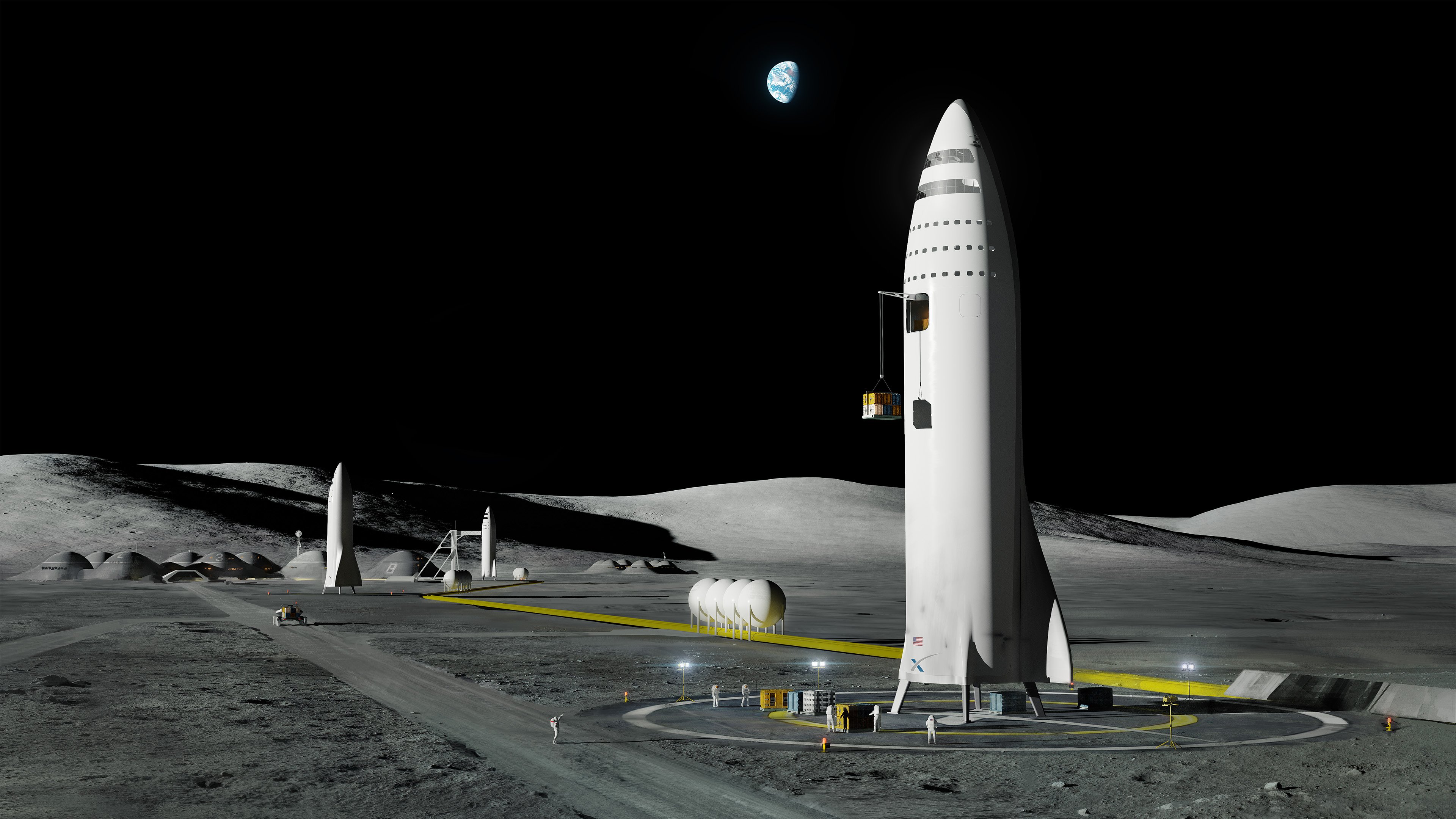
While it might not look like much (aside from a “no duh” statement) to anyone unfamiliar with the trials and tribulations of NASA bureaucracy and politicking, this quote – directed at an audience of senior NASA scientists and managers and independent experts – is absolutely extraordinary in the context of NASA’s history and the formulaic eggshells NASA administrators have traditionally been forced to walk on when discussing American rocketry.
Not only is SLS/Orion utterly and conspicuously absent in a response to the “how” of starting a new wave of lunar exploration, but Bridenstine also almost explicitly names Blue Origin and SpaceX as torchbearers of the sort of exceptional technological innovation that might revolutionize humanity’s relationship with space. By referring specifically to “commercial companies that can do things that weren’t possible even just a few years ago”, the only obvious answers in the context of serious human exploration on and around the Moon are Blue Origin and SpaceX, both of which managed their first commercial rocket landings in late 2015.
Bridenstine went even further still, noting that NASA will need not just reusable rockets for this sustainable lunar exploration, but also reusable orbital tugboats (space tugs) to sustainably ferry both humans and cargo to and from Earth and the Moon and reusable lunar landers capable of many trips back and forth from space stations orbiting the moon. At one point, he even used SpaceX CEO Elon Musk’s (in)famous and well-worn analogy of commercial airlines to emphasize the insanity of not using reusable rockets:
“We have reusable rockets [now]… Imagine if you flew here across the country to [NASA Ames] in a 737 and when the mission was over, you threw the airplane away. How many of you would have flown here?” – NASA Administrator Jim Bridenstine, 08/29/2018
At today's NASA Advisory Council (NAC) meeting, Administrator Jim Bridenstine says the next hop to the moon is going to be sustainable – and will require reusable spaceflight hardware. Uses the same airplane analogy @ElonMusk does when it comes to explaining advantages.
— Emre Kelly (@EmreKelly) August 29, 2018
Reusable rockets lead the charge
It may be generous to include Blue Origin side by side with SpaceX, given the fact that its New Shepard rocket is extremely small and very suborbital, but the company does have eyes specifically set lunar landers and outposts (a project called Blue Moon) and is developing a large and reusable orbital-class rocket (New Glenn) set to debut in the early 2020s.
- Falcon Heavy’s side boosters seconds away from near-simultaneous landings at Landing Zones 1 and 2. (SpaceX)
- We’re not here just yet, but SpaceX is pushing hard to build BFR and get humanity to Mars as quickly as practicable. (SpaceX)
- Blue Origin’s aspirational future, the highly reusable BE-4 powered New Glenn rocket. (Blue Origin)
- Blue Origin’s Blue Moon concept, set to begin experimental lunar landings as early as 2022 or 2023. (Blue Origin)
SpaceX, while focused on Mars colonization, has also expressed a willingness to participate in any sort of lunar exploration that NASA or other international space agencies might have interest in. Currently in the middle of developing its own massive and fully reusable rocket, known as the Big F_____ Rocket (BFR), SpaceX nevertheless already has a flight-tested, highly successfully, and unbeatably cost-effective family of reusable Falcon rockets capable of affordably launching significant mass to the Moon. In fact, both NASA and ESA (European Space Agency) are already seriously considering SpaceX’s Falcon Heavy as the launch vehicle of choice for several critical pieces of a Moon-orbiting space station, expected to launch no earlier than the early to mid-2020s.
Whether or not Bridenstine’s incredible and eloquent statements translate into tangible changes to NASA’s long-term strategy, it’s quite simply refreshing to hear a senior NASA executive – let alone the administrator – speak freely and rationally about the reality of what is needed to enable a truly new era of human spaceflight and exploration.
For prompt updates, on-the-ground perspectives, and unique glimpses of SpaceX’s rocket recovery fleet check out our brand new LaunchPad and LandingZone newsletters!

News
Tesla hints at Starlink integration with recent patent
“By employing polymer blends, some examples enable RF transmission from all the modules to satellites and other communication devices both inside and outside the vehicle.”

Tesla hinted at a potential Starlink internet terminal integration within its vehicles in a recent patent, which describes a vehicle roof assembly with integrated radio frequency (RF) transparency.
The patent, which is Pub. No U.S. 2025/0368267 describes a new vehicle roof that is made of RF-transparent polymer materials, allowing and “facilitating clear communication with external devices and satellites.”
Tesla believes that a new vehicle roof design, comprised of different materials than the standard metallic or glass elements used in cars today, would allow the company to integrate modern vehicular technologies, “particularly those requiring radio frequency transmission and reception.
Tesla has recently filed a US patent application on integrating RF transparent materials into the roof structure.
“facilitating clear communication with external devices and satellites”
Tesla fleet is getting @Starlink connectivity integration soon. LFG @Tesla @elonmusk… pic.twitter.com/bLa8YtPLd1
— Chansoo Byeon (@Chansoo) December 9, 2025
Instead of glass or metallic materials, Tesla says vehicles may benefit from high-strength polymer blends, such as Polycarbonate, Acrylonitrile Butadiene Styrene, or Acrylonitrile Styrene Acrylate.
These materials still provide ideal strength metrics for crashworthiness, stiffness for noise, vibration, and harshness control, and are compliant with head impact regulations.
They would also enable better performance with modern technologies, like internet terminals, which need an uninterrupted signal to satellites for maximum reception. Tesla writes in the patent:
“By employing polymer blends, some examples enable RF transmission from all the modules to satellites and other communication devices both inside and outside the vehicle.”

One of the challenges Tesla seems to be aware of with this type of roof design is the fact that it will still have to enable safety and keep that at the forefront of the design. As you can see in the illustration above, Tesla plans to use four layers to increase safety and rigidity, while also combating noise and vibration.
It notes in the patent that disclosed examples still meet the safety requirements outlined in the Federal Motor Vehicle Safety Standards (FMVSS).
Starlink integrated directly into Tesla vehicles would be a considerable advantage for owners. It would come with a handful of distinct advantages.
Initially, the inclusion of Starlink would completely eliminate cellular dead zones, something that is an issue, especially in rural areas. Starlink would provide connectivity in these remote regions and would ensure uninterrupted service during road trips and off-grid adventures.
It could also be a critical addition for Robotaxi, as it is crucial to have solid and reliable connectivity for remote monitoring and fleet management.
Starlink’s growing constellation, thanks to SpaceX’s routine and frequent launch schedule, will provide secure, stable, and reliable internet connectivity for Tesla vehicles.
Although many owners have already mounted Starlink Mini dishes under their glass roofs for a similar experience, it may be integrated directly into Teslas in the coming years, either as an upgrade or a standard feature.
News
Tesla supplements Holiday Update by sneaking in new Full Self-Driving version
It seems Tesla was waiting for the Hardware 4 rollout, as it wanted to also deploy a new Full Self-Driving version to those owners, as it appeared in the release notes for the Holiday Update last night.

Tesla has surprised some owners by sneaking in a new Full Self-Driving version with the wide release of the Holiday Update, which started rolling out to Hardware 4 owners on Friday night.
Tesla has issued a controlled and very slow release pattern with the Holiday Update, which rolls out with Software Version 2025.44.25.5.
For the past two weeks, as it has rolled out to Hardware 3 and older Tesla owners, the company has kept its deployment of the new Software Version relatively controlled.
It seems Tesla was waiting for the Hardware 4 rollout, as it wanted to also deploy a new Full Self-Driving version to those owners, as it appeared in the release notes for the Holiday Update last night.
Tesla Full Self-Driving v14.2.1.25 made its first appearance last night to Hardware 4 owners who are members of the Early Access Program (EAP). It appears to be a slight refinement from FSD v14.2.1, which has been out for a couple of weeks.
Tesla v2025.44.25.5 Holiday update incoming
Also Full Self-Driving v14.2.1.25!!! pic.twitter.com/74D7S0UGXz
— TESLARATI (@Teslarati) December 13, 2025
Many owners welcome the new FSD version, us included, because we’ve been less than impressed with v14.2.1. We have experienced some minor regressions with v14.2.1, especially with Speed Limit recognition, Speed Profile tinkering, and parking performance.
As it stands, Full Self-Driving is still particularly impressive, but Tesla is evidently having an issue with some of the adjustments, as it is still refining some of the performance aspects of the suite. This is expected and normal with some updates, as not all of them are an improvement in all areas; we routinely see some things backtrack every once in a while.
This new FSD version is likely to take care of those things, but it also includes all of the awesome Holiday Update features, which include:
- Grok with Navigation Commands (Beta) – Grok will now add and edit destinations.
- Tesla Photobooth – Take pictures inside your car using the cabin-facing camera
- Dog Mode Live Activity – Check on your four-legged friend on your phone through periodic snapshots taken of the cabin
- Dashcam Viewer Update – Includes new metrics, like steering wheel angle, speed, and more
- Santa Mode – New graphics, trees, and a lock chime
- Light Show Update – Addition of Jingle Rush light show
- Custom Wraps and License Plates – Colorizer now allows you to customize your vehicle even further, with custom patterns, license plates, and tint
- Navigation Improvements – Easier layout and setup
- Supercharger Site Map – Starting at 18 pilot locations, a 3D view of the Supercharger you’re visiting will be available
- Automatic Carpool Lane Routing – Navigation will utilize carpool lanes if enabled
- Phone Left Behind Chime – Your car will now tell you if you left a phone inside
- Charge Limit Per Location – Set a charge limit for each location
- ISS Docking Simulator – New game
- Additional Improvements – Turn off wireless charging pad, Spotify improvements, Rainbow Rave Cave, Lock Sound TRON addition
Tesla also added two other things that were undocumented, like Charging Passport and information on USB drive storage to help with Dashcam.
Cybertruck
Tesla updates Cybertruck owners about key Powershare feature

Tesla is updating Cybertruck owners on its timeline of a massive feature that has yet to ship: Powershare with Powerwall.
Powershare is a bidirectional charging feature exclusive to Cybertruck, which allows the vehicle’s battery to act as a portable power source for homes, appliances, tools, other EVs, and more. It was announced in late 2023 as part of Tesla’s push into vehicle-to-everything energy sharing, and acting as a giant portable charger is the main advantage, as it can provide backup power during outages.
Cybertruck’s Powershare system supports both vehicle-to-load (V2L) and vehicle-to-home (V2H), making it flexible and well-rounded for a variety of applications.
However, even though the feature was promised with Cybertruck, it has yet to be shipped to vehicles. Tesla communicated with owners through email recently regarding Powershare with Powerwall, which essentially has the pickup act as an extended battery.
Powerwall discharge would be prioritized before tapping into the truck’s larger pack.
However, Tesla is still working on getting the feature out to owners, an email said:
“We’re writing to let you know that the Powershare with Powerwall feature is still in development and is now scheduled for release in mid-2026.
This new release date gives us additional time to design and test this feature, ensuring its ability to communicate and optimize energy sharing between your vehicle and many configurations and generations of Powerwall. We are also using this time to develop additional Powershare features that will help us continue to accelerate the world’s transition to sustainable energy.”
Owners have expressed some real disappointment in Tesla’s continuous delays in releasing the feature, as it was expected to be released by late 2024, but now has been pushed back several times to mid-2026, according to the email.
Foundation Series Cybertruck buyers paid extra, expecting the feature to be rolled out with their vehicle upon pickup.
Cybertruck’s Lead Engineer, Wes Morrill, even commented on the holdup:
As a Cybertruck owner who also has Powerwall, I empathize with the disappointed comments.
To their credit, the team has delivered powershare functionality to Cybertruck customers who otherwise have no backup with development of the powershare gateway. As well as those with solar…
— Wes (@wmorrill3) December 12, 2025
He said that “it turned out to be much harder than anticipated to make powershare work seamlessly with existing Powerwalls through existing wall connectors. Two grid-forming devices need to negotiate who will form and who will follow, depending on the state of charge of each, and they need to do this without a network and through multiple generations of hardware, and test and validate this process through rigorous certifications to ensure grid safety.”
It’s nice to see the transparency, but it is justified for some Cybertruck owners to feel like they’ve been bait-and-switched.
